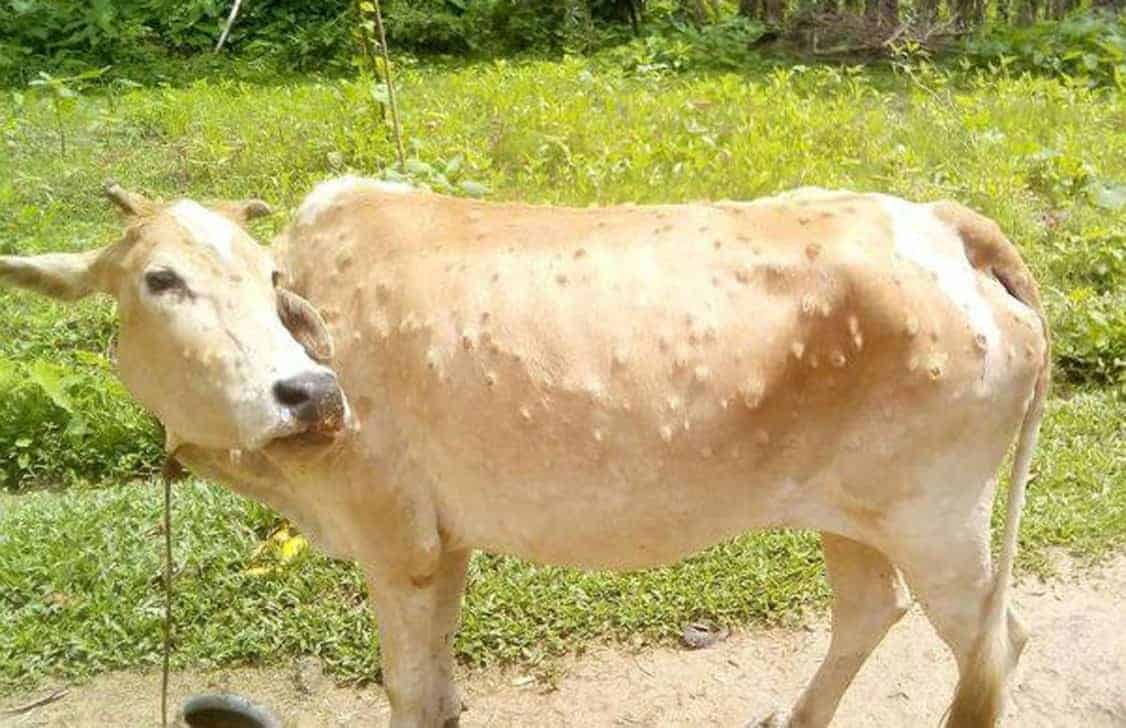
Maharashtra: Over 93,000 Cattle Infected with Lumpy Skin Disease in State
Lumpy Skin Disease (LSD), an infectious viral disease of the cattle and bovine animals, is fast spreading in some districts of Vidarbha and Marathwada, creating panic among dairy farmers. According to the state Animal Husbandry department, so far 93,252 infections of the Capripox virus, which was first detected in the state in Gadchiroli district in April, have been recorded in the state.
The virus causes the development of stiff, round, cutaneous nodules of 2-5 cm in diameter on the skin of the animal, besides causing fever, lesions in the mouth and reduced milk production. The virus strain currently active in Maharashtra is said to have about 20 per cent morbidity and about 1 per cent mortality rate. The state has launched a vaccination programme.
The virus is not zoonotic and doesn’t infect humans through consumption of milk or meat. Though it affects the cow and buffalo, however, infection in the latter has been found to be minimal.
As per the state Animal Husbandry department, Chandrapur is the worst affected with 50,419 cases, followed by Nagpur with 12,296 cases so far. Other affected districts in Vidarbha are Gondia (8,150), Vardha (3,598) and Gadchiroli (1,358). In Marathwada, the disease has been detected in Nanded (13,136) and Parbhani (2,182) in considerable proportion with a sporadic spread in several other districts.
Of the 93,252 animals infected so far since April, 67,035 have recovered following medical intervention.
Devarshi Meher, a dairy farmer from Pathri in Parbhani district, who owns a herd of about 100 cattle, said three of his cows were showing symptoms. “Two have swollen feet and can’t walk. The third one has developed nodules on the back. The milk production has considerably decreased,” he said, adding that he found privately sold vaccines expensive and was trying to contact government veterinarian hospitals for subsidised inoculation.
Dr Devendra Jadhav, deputy commissioner of Animal Husbandry (Disease Control), said the department has launched a massive vaccination programme and has so far inoculated 1.52 lakh animals with Goat Pox vaccine.
“Soon after the detection in Chandrapur, we had started a vaccination programme in Chandrapur, Gadchiroli and Nagpur. We have 4.5 lakh vaccination doses available with us. Whenever an infection is detected, we are sending the vaccine to inoculate the healthy animals to contain the spread,” said Jadhav.
He added that the virus is not highly virile and the mortality rate is also not high. Owing to the spread of the virus to newer areas, an advisory has been issued to dairy farmers enlisting preventive measures that they need to take while rearing the animals.
“Since the virus spread via insects, it’s very important that the sheds are kept insect-free. The animals can be massaged with insect repellents. Apart from this, affected animals have to be kept away from healthy ones and should not be taken away for grazing. Also, once an infected animal is found, cattle in a five-km radius should be inspected and inoculated,” said Jadhav. The latest outbreak of the disease was detected in Mayurbhanj and Bhadrak in Odisha in November 2019. In January this year, cases were reported from Alappuzha, Kollam and Pathanamthitta districts of Kerala.
Source: The article is extracted from The IndianExpress, September 03, 2020.
